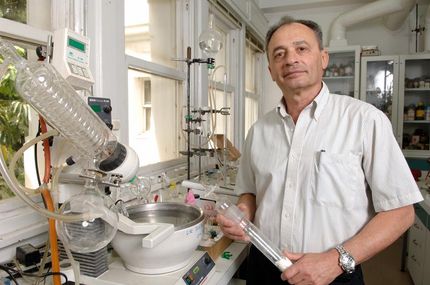A safe approach to nanotechnology
Boiling up zinc oxide nanorods without toxic solvents
A non-toxic and environmentally friendly way to make tiny nanorods of zinc oxide has been developed for the first time by researchers in Saudi Arabia. The approach, described in the current issue of the International Journal of nanoparticles, could allow the nanorods to be used safely in medical and for other applications.
Zinc oxide has many uses when fabricated as nanoparticles and nanorods, just 100 nanometers in diameter. In such as nanoscopic form, it can be used in food products, such as breakfast cereals as a source of zinc, a necessary nutrient. It can also be used in dentistry and cosmetic ointments, creams, and lotions to protect against sunburn and skin damage caused by ultraviolet light.
Zinc oxide can also act as a sensor for detecting changes in electric current due to absorption of gas molecules and so be used for gas leak warning devices. In electronics, the same material has wrought a revolution in lasers and light emitting diodes (LEDs). And as a biosensor, it can be used as a biomimic membrane to immobilize and modify biomolecules.
Now, M.A. Shah and M.S. Al-Shahry of the King Khalid University, in Abha, and A.M. Asiri of the King Abdul-Aziz University, in Jeddah, Saudi Arabia, have discovered a safe and biocompatible route for the synthesis of zinc oxide nano rods. Their route is based on the simple reaction of water and zinc powder at a relatively low temperature. "Since water is regarded as a benign solvent and non-toxic, the product (nanorods) could be used safely for biomedical and other applications," Shah says.
The approach is versatile for making different kinds of zinc oxide nanostructures and critically avoids the use of toxic organic solvents altogether. In the new approach, zinc powder is added to water, blasted with ultrasound for few minutes and then warmed at a temperature of 200 Celsius for 24 hours. The team has used the analytical techniques of X-ray and field emission electron microscopy to reveal the structure of the product.
The researchers found that they can produce uniform nanorods of 30 to 100 nanometers. They have also found that they can use pure water in what they say is a "simple and straightforward approach…suitable for large scale production." The proposed method is novel, rapid, economical, environmentally benign, and produces no pollutants, Shah adds.
Original publication: "Simple approach for the synthesis of zinc oxide nanorods", International journal of nanoparticles, 2009, 2, 87-94
Other news from the department science
These products might interest you
Most read news
More news from our other portals
See the theme worlds for related content
Topic world Synthesis
Chemical synthesis is at the heart of modern chemistry and enables the targeted production of molecules with specific properties. By combining starting materials in defined reaction conditions, chemists can create a wide range of compounds, from simple molecules to complex active ingredients.

Topic world Synthesis
Chemical synthesis is at the heart of modern chemistry and enables the targeted production of molecules with specific properties. By combining starting materials in defined reaction conditions, chemists can create a wide range of compounds, from simple molecules to complex active ingredients.
































































